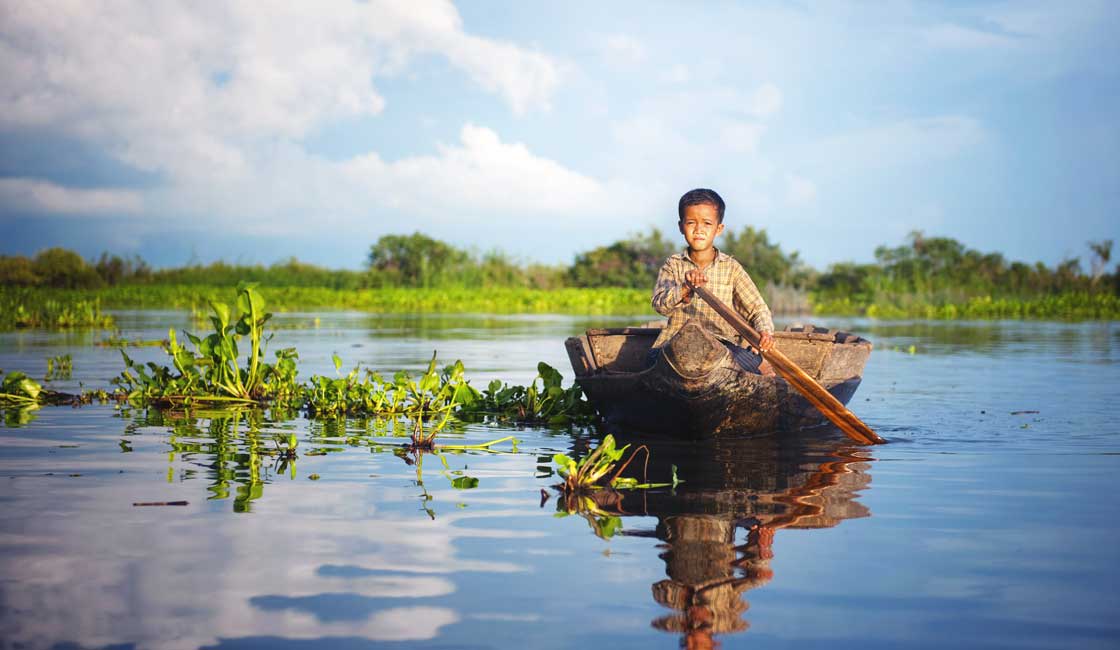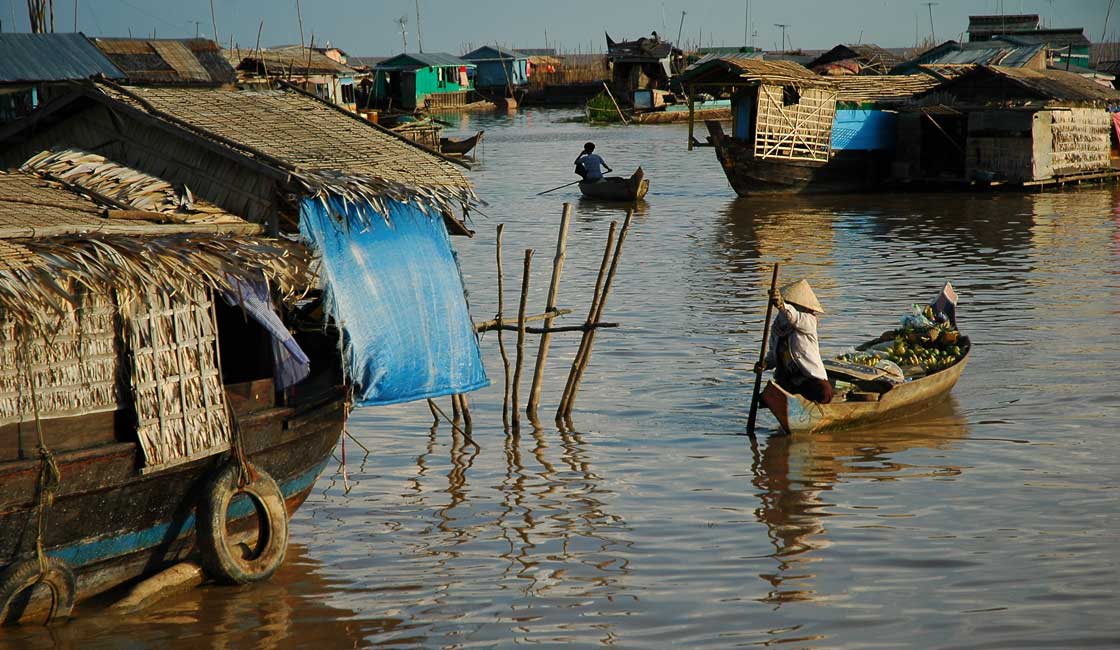
Tonle Sap is the largest freshwater lake in Southeast Asia. A vast body of water in northwest Cambodia, 3 million people live on or around the Tonle Sap and make their living from fishing and farming. The lake’s fishing industry is key to the country’s diet and economy. In fact, Tonle Sap Lake is one of the biggest sources of freshwater fish on the planet.
Located in the Lower Mekong Basin, the Tonle Sap Lake joins with the 120 km long Tonle Sap River which in turn flows into the Mekong River. Water levels in the Mekong – which vary according to the season – directly affect the direction of flow in the Tonle Sap River. The phenomenon known as flow reversal sees the Tonle Sap River flowing for six months of the year in one direction and the remaining six months in the opposing direction, according to the season (wet/dry).

Tonle Sap boats
The amount of water in the lake – and thus its size – varies greatly depending on the season. Wet season (beginning in May/June) sees the Mekong River system fill with water, flooding the lake and its plains. The lake grows to 10,000 square km or more and has a depth of 14 meters (46 feet). Water levels are at their highest in September and October before the dry season begins in November. In the dry season, the lake measures about 2800 km squared and are just 1 to 2 meters deep (3 to 6 feet).
A UNESCO biosphere reserve, the lake is inhabited by a multitude of fish species, including the rare Mekong Giant Catfish. You can also find reptiles, snakes, and endangered bird species, as well as abundant plant life. The surrounding area of the lake features fertile soil, a variety of vegetation, and an area of freshwater mangroves known as the flooded forest.

Village on the lake
Tonle Sap Lake is located 15 km south of Siem Reap and extends southeast towards Cambodia’s capital, Phnom Penh. Tours can easily be arranged from Siem Reap, and it takes around 45 minutes by tuk-tuk down dusty dirt roads to reach the boat port at Chong Khneas. This is the Angkor Archeological Park area and when you’re visiting the Angkor Wat and other temples, it’s worth it taking one day to experience the Tonle Sap fascinating world. Some Mekong cruises also enter the lake in the high water season, visiting villages and farms on the lake.
On Tonle Sap Lake tours you can visit one (or more!) of the many floating villages situated on the lake and learn how the locals live. You can go about your trip independently but beware as many who choose this option are overcharged for their tickets and hassled for money throughout their trip. The safer and best option is to book a tour of the lake and its floating villages.
Popular villages to visit are the following:
Trips often end with a sunset experience on the Tonle Sap, the sun gleaming and warm on the lake’s vast, shimmering waters.

Stilted houses on the lake
To see the lake in all its glory, visit during the rainy season which runs from June to October. Plains and forests flood, wildlife is abundant, and villages magically float high on the water. Tonle Sap can also be visited in dry season, but the experience is much less spectacular. Moreover, some trips to floating villages located further out may be restricted or involve a mix of land and water travel.
Note: If you have a particular interest in visiting the bird sanctuaries then the months of December to February are best. Birds gather here in flocks as waters dry up in other areas. Logistically, visiting later than February may entail complications as sites access is reduced due to low water levels.
While Rainforest Cruises aim to provide accurate and up-to-date information, we make no representations as to the accuracy or completeness of any information herein or found by following any link on this site. Rainforest Cruises cannot and will not accept responsibility for any omissions or inaccuracies, or for any consequences arising therefrom, including any losses, injuries, or damages resulting from the display or use of this information.




